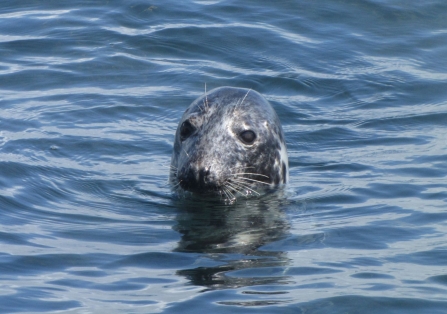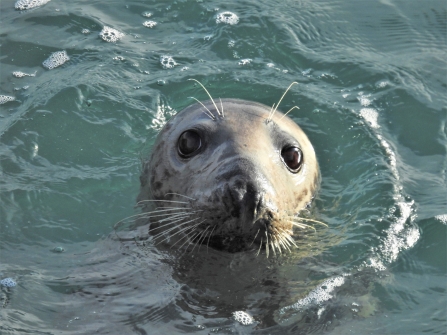This watery pilgrimage was made for a landmark 100th time as part of a monthly seal survey, a partnership project between the Trust and Cornwall Seal Group Research Trust, which began 11 years ago to discover the secret world of the island’s seals.
Led by Cornwall Seal Group Research Trust, this citizen science project was developed in partnership with Cornwall Wildlife Trust and the Looe Marine Conservation Group.
Abby Crosby, Cornwall Wildlife Trust’s Marine Conservation Officer organised the very first trial survey;
“10 years ago, so little was actually known about Looe’s charismatic seals. But today, 100 surveys on, a whole world has been opened to us and all thanks to the dedication of local volunteers. Now we understand this population of Atlantic grey seals better, we can work together as a community to conserve them, protecting their future which is so important for Looe’s ecotourism industry.”


